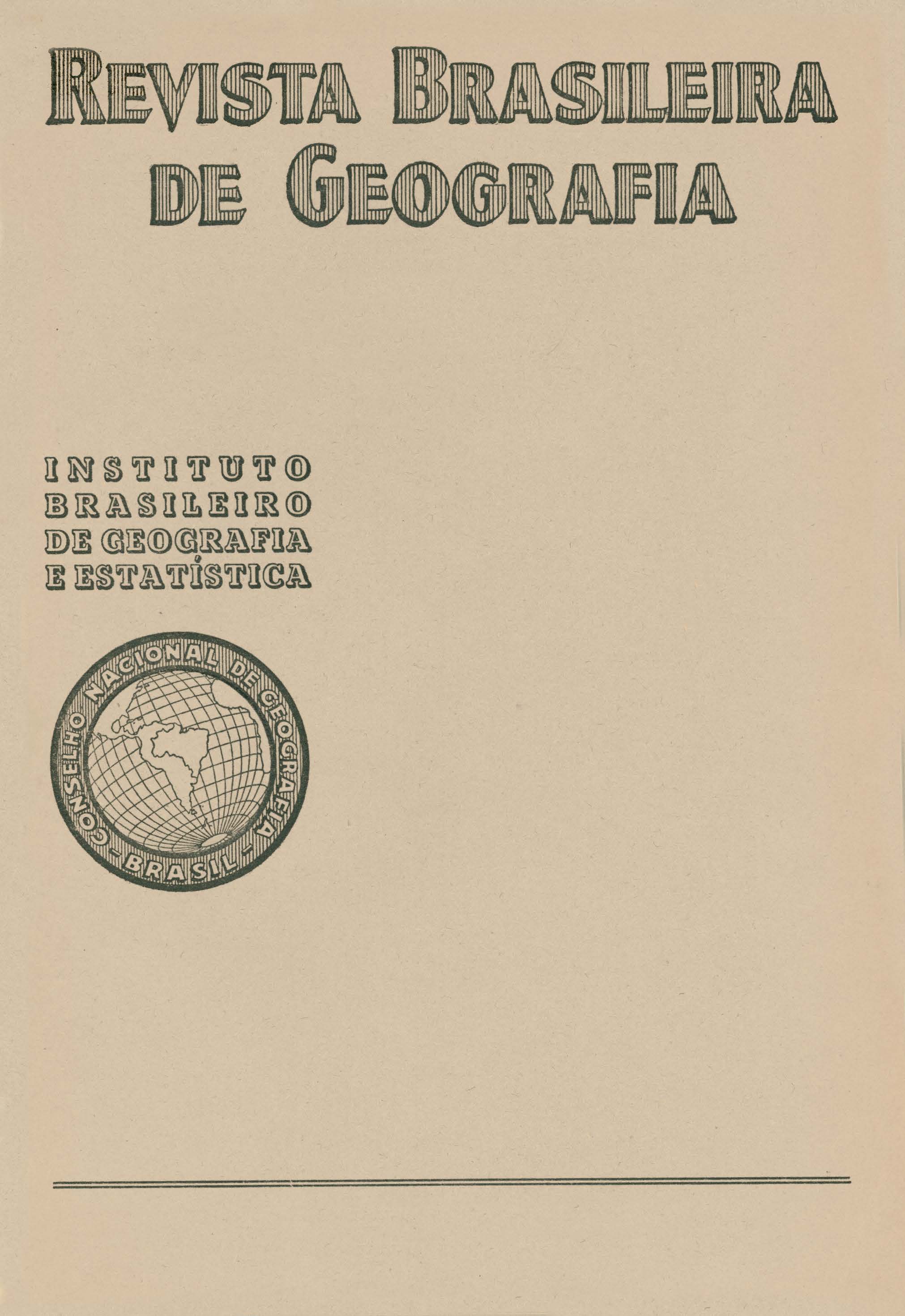Geografia dos transportes no Brasil : circulação interna anual : estradas de ferro
Resumo
Engineer Moacir F. Silva, technical advisor to the National Geographic Council, continues, in· this number, his work about Geography of Transportation in Brazil. He begins Chapter VI (present internal circulation) by writing about "Railways".
Considering the designs of the railways as dependent upon the relief of the ground he avers, and cites some authors, that the aspects of the outlines of these plans - (whether rolling, undulated or jagged) - are entirely dependent upon the difficulties offered by the terrain. He goes on to analyse the hypsometry of Brazil - a country of plateaux or extensive table-lands for about 5/8 of its area and of plains and lowlands for the remaining 3/8, - and divides the Brazilian railways into: lowland lines, up to an altitude of 50 metres; plain lines up to 200 m: plateau ascension lines between the rates of 200 and 500 m; plateau lines between 500 and 800 m; table-Zand lines beyond 800 m; mountain range lines when the land lies on short hilly stretches 500 m above the minimum height, and finally summit tracks or peak lines when above 1200 m altitude. One or more examples of each classification are given.
With reference to the formation they present on paper, he points them out as dependent upon the state of development of the region crossed, the topographical facilities, the economical possibilities, the localization of the nuclei of population, etc. Preliminariy he defines them as uni-axial and pluri-axial railway plans. The uni-axial type may be; simple uni-axial ( single line without branches) and spinal (a trunk line With branches on both sides) . The pluri-axial type is Clivided lnto: arborescent (a sub-divided main line with several branches and subbranches appearing on paper as with a tree-like shape), radical (formed by lines starting from a port), stellar (branching out from an important railway centre), composite (a combination of two or more of the previous types), quadrangular (starting from two or more ports in quite parallel directions, connected by cross lines) and irregular (in labyrinth formation). As to functions he classifies the railways into penetration or extensive, radial or intensive and meandering or dispersive. Penetration railways are those to be found In regions yet to be developed; they are plans In the course of progression (penetration, expansion or collection lines). The radial lines may be noted In regions possessing large economical development an high demographic density.
The distribution of the railways by Brazilian geo-economic regions is summarized in ·the following manner: - AMAZONIA (Acre, Amazonas and Pará) totaling 381 kilometres of lines, or 1.11% of the Brazilian grand total; MIDDLE NORTH (Maranhão and Piaui) with 696 km, or 2%; NORTHEAST (Ceará, Rio Grande do Norte, Paraíba, Pernambuco and Alagoas) with 3,676 km, or 10.74'7(1 MIDDLE SOUTHEAST (Sergipe and Baia) with 2,467 km, or 7.20%; EAST (Espírito Santo, Rio de Janeiro, Distrito Federal and Minas Gerais) with 11,754 km, or 34.34%; MIDDLE SOUTH (S. Paulo) with 7,447 km, or 21.75%; SOUTH (Paraná, Santa Catarina and Rio Grande do Sul) with 6,249 km, or 18.25% and, finally, CENTRE (Goiaz and Mato Grosso) with 1,555 km, or 4.54•,
He describes the isolated networks and the ports served by railways. giving details of these lines. According to the economic classification established by the Statistical ·section of the Federal Inspectorate of Railways, based upon the gross annual revenue, we had in 1937 11 first class roads (revenue above 20,000 contos de reis), 6 second class (revenue between 5,000 and 20,000 contos) and. the remaing, third class (revenue below 5,000 contos).
By lenght of track or kilometrage he names large railways those over 1,000 kilometres lenght, of which we have 12; medium railways between 300 and 1,000 km, numbering 6; and small railways with less than 300 km (we have 15), without counting 22 of less than 100 km, merely for local purposes. He gives a detailed picture of each class with the names and lenght of each railway.
The distribution is made by States which, he owns, is still very Irregular. He describes briefly their plans and extensions and terminates by describing the frontier railways.
The following explanatory illustrations appear In the text: - Hypsometric chart of Brazil, Contours of Mountain Ranges, Types of Railway Designs, Central of Brazil Railway (outline of the tracks and contour of Barra), Leopoldina, Railway-lines of AMAZONIA - MIDDLE NORT -NORTHEAST- MIDDLE SOUTHEAST- EAST- MIDDLE SOUTH- SOUTH and CENTRE.






